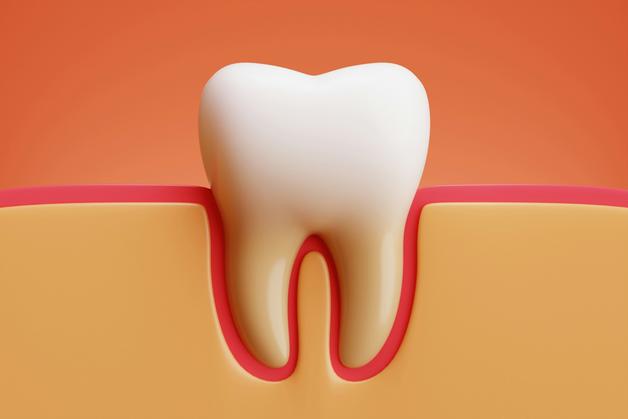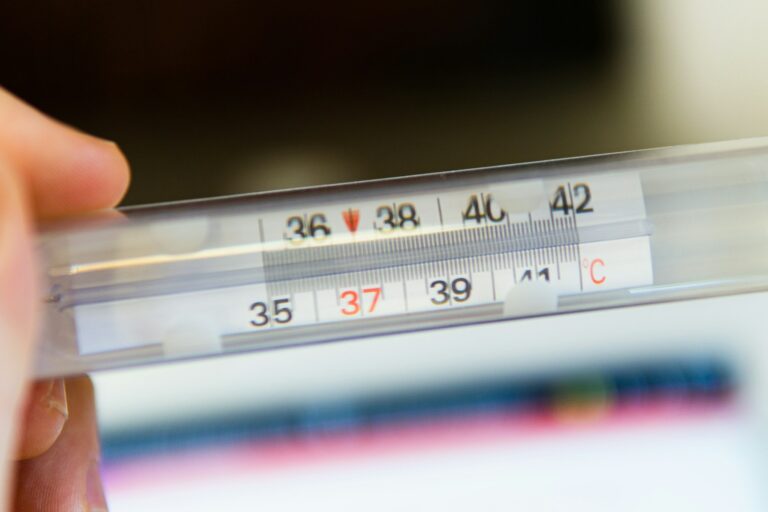The arrival of a baby’s first teeth is a moment many parents await with a sense of excitement, surprise, and sometimes, not a little apprehension. The baby teething order—that orchestrated sequence in which those twenty little pearls emerge—can often be a source of questions, worry, or just plain curiosity. Will my child’s teeth come in on time? Is it normal for the top ones to show up before the bottom? Why is she drooling so much these days? There’s no shortage of anxious thoughts. Teething, after all, marks a significant leap: chewing new foods, forming first words, and building a foundation for future smiles. Understanding how these changes unfold, what variations can arise, and how to ease discomfort is something every parent seeks. Here, exploring the baby teething order, its timing, variations, and the best ways to support oral health sets the stage for confident, informed parenting.
Baby Teething Order: Timeline and Developmental Milestones
Why Does the Baby Teething Order Matter?
Teething is more than just a rite of passage—it’s a symphonic progression tailored by nature for a reason. The baby teething order supports balanced jaw development, makes the transition to solids smoother, and even has a hand in shaping those first attempts at words. Teeth typically erupt in pairs, right and left, beginning with the lower central incisors. Symmetry is no accident here—it ensures both sides of your child’s jaw experience similar growth, important for chewing, speech, and the eventual alignment of permanent teeth.
Imagine it: if one side gets a head start and the other lags behind, it might sound minor, but for a small jaw learning to bite, chew, and speak, these subtleties have repercussions. Balanced emergence sets the groundwork for a harmonious, functional mouth.
Typical Sequence and Age Ranges: What to Expect
While every child marches to their own developmental beat, most follow a classic progression—the baby teething order. Here’s what many parents see:
- Lower central incisors (bottom front) appear first, usually around 6–10 months. Noticed your little one gnawing their fingers lately? This is probably why.
- Upper central incisors (top front) join in from 8–12 months.
- Upper lateral incisors (next to the top front teeth) emerge between 9–13 months.
- Lower lateral incisors (beside the bottoms) surface between 10–16 months.
- First molars—those vital grinding teeth—arrive next, between 13–19 months (top) and 14–18 months (bottom).
- Canines (sometimes called “eye teeth”) develop between the incisors and molars, from 16–22 months (upper) and 17–23 months (lower).
- Second molars close the sequence, sprouting between 23–31 months (lower) and 25–33 months (upper).
The spread seems wide, but remember: teething varies. For some, the process is swift; for others, a slow burn over weeks or even months. Teeth nearly always emerge in symmetric pairs, left and right, preserving jaw balance and promoting an even bite.
Functions of Different Teeth and Their Roles in Development
It’s not random which teeth appear when. Central and lateral incisors make it easier for babies to bite into soft foods—a banana, a steamed carrot, rice khichdi. Canines—the pointed ones—are next, and these make tearing food a more controlled affair. Finally, first and second molars bring grinding power, essential for handling chapatis, dals, and the more adventurous toddler menu.
Every stage encourages your child to practice new textures and tastes. Each newly arrived tooth brings a burst of possibility: more complex food options, clearer speech sounds, and, inevitably, wider grins.
Symmetry, Variations, and When Differences Matter
Teeth erupting in pairs and maintaining symmetry aren’t mere coincidences. This rhythm helps the mouth adapt, ensures a smoother chewing action, and avoids imbalances that could complicate things later—think crooked adult teeth or odd bite patterns. But what if teeth are “late” or show up out of their expected order?
Genetics play a notable part, and it’s quite natural for timelines to shift. An older sibling may have flashed their first tooth at six months, while the next may only start at eleven. As long as catching up happens symmetrically and no other developmental concerns are present, there’s rarely cause for alarm. Variations in the baby teething order mainly matter if teeth remain absent after 15–18 months or if there are signs of missing, extra, or oddly shaped teeth.
What Determines the Timing and Sequence?
Factors: Genetics, Premature Birth, Nutrition, and Overall Health
The influences are many—genetic blueprints, whether baby arrived early, nutritional status, and general well-being all choreograph the teething timeline. Low calcium or vitamin D? The process might delay. Poor health or prematurity? Similar result. Conversely, some babies are born with teeth—these “natal teeth” may demand immediate dental advice due to feeding or safety risks. Missing or extra teeth, while rare, can signal underlying syndromes or require a dentist’s monitoring. The baby teething order is sturdy, but not immune to detours.
Recognising Teething: Symptoms, Myths, and Medical Clarity
Classic Signs
The parade of classic signs: the unstoppable drool, swollen or reddened gums, flushed cheeks, and a tendency to chew anything within reach. Mild irritability, sleep interruptions, slight appetite dips, or even a bluish bump (eruption cyst) where a tooth will soon pop through—all typical. The overlap of developmental leaps and teething sometimes leads to restless nights, too.
Myths vs. Scientific Facts
But let’s be clear: teething doesn’t cause high fever (over 100.4°F/38°C), persistent diarrhoea, or intense, spreading rashes. Those symptoms point to something else—often coinciding infections (especially since this is also the age for increased exposure to new places, people, and bugs). Suspect fever, vomiting, or indisposition? Best consult with your pediatrician, as teething is rarely the true culprit behind pronounced illness.
Comfort Measures: Easing the Journey
Safe Soothing Techniques
How to help? Try gently massaging the gums with a clean finger or gauze—simple, effective, and backed by science. Cool (but not frozen) teethers offer relief, as do chilled spoonfuls of yogurt or soft fruits for older infants. Supervision is essential; safety first to avoid choking hazards.
Pain Relief: When and How to Use Medications
If discomfort crosses the line into tears or impacts sleep, acetaminophen (paracetamol) or ibuprofen (for those over 6 months) can be considered, always at the paediatrician’s recommended dose and schedule. Mixing these two medications? Do so only if specifically advised. Numbing gels (especially those with benzocaine or lidocaine) are best avoided—these are not safe for infants and could have dangerous side effects.
What to Avoid
Amber necklaces, chokable objects, liquid-filled teethers: firmly not recommended. The risks, from strangulation to digestive harm, outweigh any supposed benefit.
Early Oral Hygiene and Dental Habits
First Steps: Brushing and Flossing
Once that very first tooth appears, transition to brushing twice a day with a small-headed, soft-bristled brush and a tiny smear of fluoride toothpaste (the amount that fits on a grain of rice). Before this milestone? A soft, damp cloth wiped across the gums helps keep the mouth clean.
As soon as two teeth touch, introduce gentle flossing. Let your child watch, mimic, and participate—but supervised, always, until at least 7 or 8 years old. A parent’s modeling builds lifelong habits more than any lecture ever could.
Diet, Nutrition, and Tooth Health
Teething is an opportunity: a time to reinforce a balanced diet rich in calcium, vitamin D, phosphorus, and vitamin C. Think: curd, paneer, mashed bananas, steamed veggies—cool, gentle foods that soothe irritated gums while fuelling healthy growth.
Sugary treats, sweetened drinks, and frequent juice? These are best avoided, particularly when teeth are erupting, to protect vulnerable enamel and limit the risk of early childhood caries (tooth decay). Bottles in bed and sticky foods—watch out for these common but preventable causes of future dental problems.
Regular Dental Visits
Dental professionals now recommend a first checkup by age one, or within six months of the first tooth’s appearance. Early visits identify concerns, offer advice, and help children develop comfort with dental care from a young age.
Losing Baby Teeth and Gaining Permanents: The Next Big Step
What to Expect
From around six years old, the pattern reverses: the lower central incisors are often the first to wiggle and fall out, mirroring how they arrived. Permanent molars slot in even as some baby teeth remain, ensuring your child’s jaw steadily adapts to larger, stronger teeth. The gradual swapping of baby for adult teeth continues until around age twelve or thirteen.
Why Losing Baby Teeth on Time Matters
Baby teeth aren’t just temporary fillers. They act as “guides” for permanent teeth, holding the space needed for optimal alignment. Early loss from decay, injury, or illness can let neighbouring teeth drift, resulting in future crowding or misalignment—a situation sometimes requiring spacers or orthodontic advice.
Baby Teething Order and Long-Term Health
Impact of Variations
When the baby teething order is disrupted—by very early, very late, or highly irregular patterns—future dental alignment can be at stake. Imbalances may contribute to malocclusion (bite issues) and crowding when adult teeth try to find their place. Consistent dental monitoring helps catch these issues early, providing options to maintain proper spacing and avoid complications.
Monitoring Tooth Eruption: When to Seek Help
If no teeth are present by 15–18 months, teeth emerge much earlier than three or four months, or you notice a distinctly irregular sequence, extra or missing teeth, or malformed crowns, it’s wise to consult your dentist. Likewise, any persistent swelling, pus, unpleasant odour, or refusal to eat signals a need for professional review.
Key Takeaways
- The baby teething order is surprisingly consistent, beginning with lower central incisors and following a symmetrical pattern, but variation is normal.
- Timing differs between children; what matters most is symmetry and gradual progress.
- Classic teething symptoms—drooling, gum swelling, irritability—are to be expected, but high fever or severe digestive symptoms almost always point to other causes.
- Early, gentle oral care and a nutritious diet pave the way for strong, healthy teeth.
- Regular dental checkups, starting by the first birthday, provide invaluable reassurance and preventive care.
- If concerns arise about delayed, early, or asymmetric tooth emergence, professional advice is available—no one has to manage these questions in isolation.
Looking for more guidance? Download the application Heloa for personalised advice, free health screening questionnaires, and support tailored to your child’s growth and milestones.
Questions Parents Ask
Can my baby’s teeth come in out of order?
Absolutely—every child is unique, and for some, the baby teething order might dance to a slightly different rhythm. This isn’t usually a worry. As long as teeth keep appearing on both sides, symmetry is kept, and your little one’s comfort isn’t disturbed, these changes are simply part of natural variety. Concerns or odd patterns? A paediatric dentist is best placed to provide peace of mind.
What should I do if my baby’s teeth are late to appear?
Delays can be unnerving, but often, they reflect your baby’s individual clock. Factors like nutrition, genetics, even premature birth play a part. If the first tooth hasn’t emerged by 15 to 18 months, have a word with your dentist or paediatrician for reassurance and assessment, especially if there are other developmental queries.
Is it normal for teething to cause a rash around the mouth?
Drool is both a symptom and a cause—the extra moisture on sensitive skin almost always leads to a mild, temporary rash around the mouth and chin. Gently wiping away saliva and using a safe barrier cream helps. If the rash spreads, worsens, or persists, a paediatrician’s advice will clarify things quickly.
Why does my child seem crankier when teething?
Teething is a sensory overload—swelling gums, new sensations, disrupted sleep. It’s natural for your child to feel a bit clingy or cranky during these times, especially with multiple teeth erupting together. Patience and comfort go a long way, as does reassurance that it’s a phase, albeit sometimes a tricky one.
My baby is chewing everything—is this safe?
Chewing is how many babies soothe teething discomfort. Offer supervised, safe objects like solid silicone teethers, cool spoons, or chilled foods if age-appropriate. Avoid small, breakable, or liquid-filled toys—these carry choking risks.
What if my baby was born with teeth?
“Natal teeth,” as these are known, are rare but memorable! Immediate dental guidance is sensible—they can sometimes interfere with feeding or risk detaching.
Is fever common with teething?
A slight, short-lived temperature rise is possible, but a true fever—above 100.4°F/38°C—usually points to infection, not teething. Seek medical advice for high temperatures or prolonged discomfort.
How important is the first dental visit?
Starting dental visits by age one helps prevent problems, establish habits, and gives you a resource for questions. These early checkups are as much about reassurance as examination.
Will my child’s permanent teeth follow the same pattern as the baby teething order?
Most often, the sequence repeats. Lower central incisors are usually lost first, followed by the top ones—a mirror image of their first appearance. Tracking tooth loss and adult tooth emergence alongside your dentist ensures healthy transition through every phase.
Further reading:









